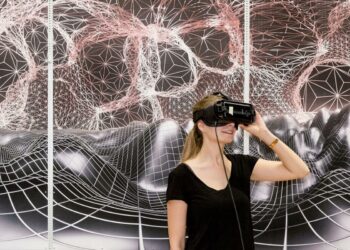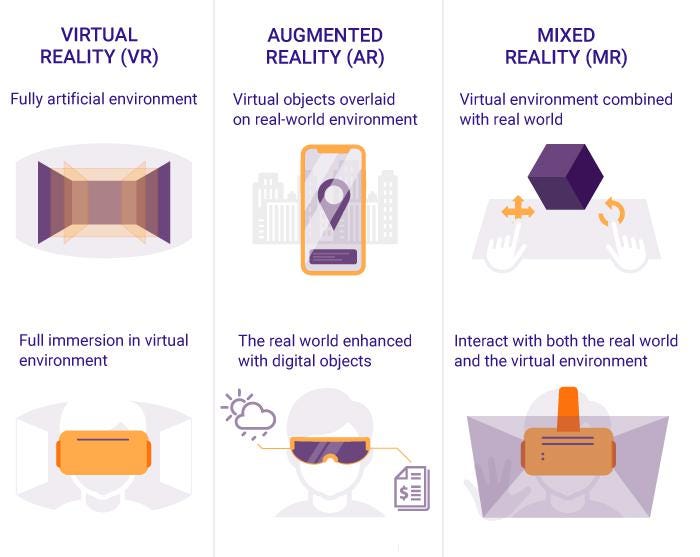Kuliraniyil Jose, Shibu: HOW REAL IS THE VIRTUAL? AN ONTOLOGICAL INTROSPECTION INTO VIRTUAL REALITY. unabr. Masters’ thesis. University of Innsbruck. Innsbruck 2019
introduction
In the Master’s thesis “How real is the virtual? An ontological introspection into virtual reality” from Shibu Jose Kuliraniyil, the author poses the question of ‘reality’ in a virtual world, which by its very addition of ‘virtual’ does not seem to be real. He discusses both the definition of the concept and the development of virtual spaces, as well as the advantages and disadvantages that exist around the topic. Furthermore, Kuliraniyil ties in current examples from the state of the art around virtual reality. The author’s main wish is to give the readers a better understanding of virtual reality with the help of his work and at the same time to list and compare the different approaches to the topic.
Level of design
The written pdf file has a very clear and simple form in terms of layout and design. Written in a classic font, it contains both recurring line spacing and legible paragraphs, which drives the reading flow throughout. This indicates that there was most likely a uniform university thesis template. As for the colour scheme of the Master’s thesis, it is kept very simple: Black writing on pure white paper. Citations are not noticeable at first glance, as they have been cleverly worked into the justification. Only when you look more closely at the footnotes do you realise that a lot of citations have been made. The bibliography is a real battleground when it comes to paragraph shifts and different font formatting.
degree of innovation
The topic of virtual reality is more topical than ever and is already being used purposefully in many fields of work. However, the thesis question is very vaguely defined and leaves far too much room for interpretation. With a more interesting main question, the master’s thesis would definitely be more worth reading, but in its current form it resembles a thick textbook from an upper secondary school with a focus on computer science.
Independence
The work appears to be written in the same way through and through, which leads me to conclude that the likelihood of cheating is very low. The text feels like it was written by one person alone from start to finish without help from others.
The work itself is very dependent on further supporting literature, as many passages are worded in a way that is very incomprehensible to lay people.
outline and structure
Kuliraniyil divides his work into three main parts: Exploring Virtual Reality, Advantages and Disadvantages of Virtual Reality and a Philosophical Questioning of the Concept of Virtual Reality. There are thus 3 main chapters, each with 3-5 sub-chapters. These are in turn split into sub-sub-chapters. In my opinion, the 4th subdivision into sub-sub-chapters is not necessary and makes the table of contents unnecessarily long, especially since some chapters are no longer than half a page. The entire work is very theoretically structured and contains no physical workpiece that is described. However, I find the division into three sections very pleasant, as one is thus forced to deal with the topic in different ways.
degree of communication
As far as the level of communication of the work is concerned, as a person who has already dealt with the topic a bit, I feel that the written text is quite understandable. However, many terms are probably too sophisticated for every reader to understand the content of the work. In my eyes, it also seems as if the work was translated into English after the fact, as many words are very stilted and forced into the sentence structure. On the plus side, the author does elaborate on some of the difficult-to-understand terms in the footnotes.
scope of work
The Master’s thesis “HOW REAL IS THE VIRTUAL? AN ONTOLOGICAL INTROSPECTION INTO VIRTUAL REALITY” deals with an enormously extensive topic. In my opinion, the master’s thesis was written without a concrete question, which makes the elaboration very superficial and much too far-reaching. Many questions are answered that no one has asked and therefore I find that the text feels more like an encyclopaedia entry than actually a well thought-out master’s thesis. The author covers too many topics and gives a very general overview of Virtual Reality.
orthography and accuracy
Due to the imprecision in defining the topic, the text initially feels uncharitable. However, the care with which the individual chapters were written should not be underestimated. It is noticeable that the author personally cares about the content of his work and has dealt with the topic sufficiently. The text is very clean and even a quick read-through does not reveal any gross spelling mistakes or the like. All in all, the Master’s thesis seems well thought out.
literature
The bibliography is a formal disaster; it switches between italics and normal, links to further reading are blue and underlined and the paragraph jumps back and forth constantly. There is no list of figures, but this is due to the fact that there are no illustrations. As far as the literature itself is concerned, there are many books and online documents, but you also find a lot of Wikipedia articles, which indicates not very qualitative research. At the end of the directory, I was very disappointed, as the work had seemed very credible until then and.
conclusion
All in all, it can be said that the content of Shibu Jose Kuliraniyil’s Master’s thesis was written to a very high standard. However, the design of the thesis was completely disregarded and no qualitative literature was used. I recognise the effort that went into the writing of the thesis, the design and structure of the master’s thesis are fine.




